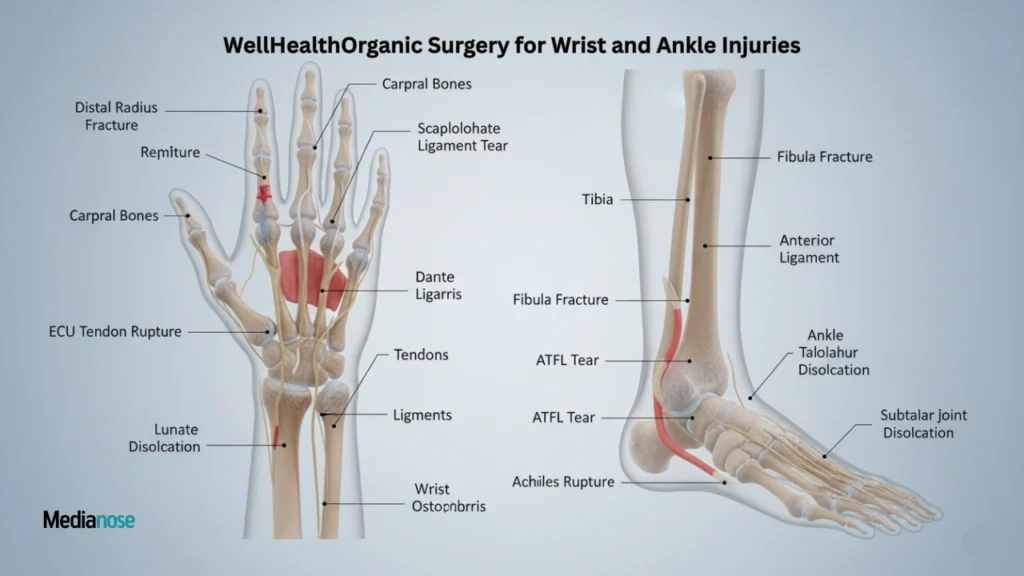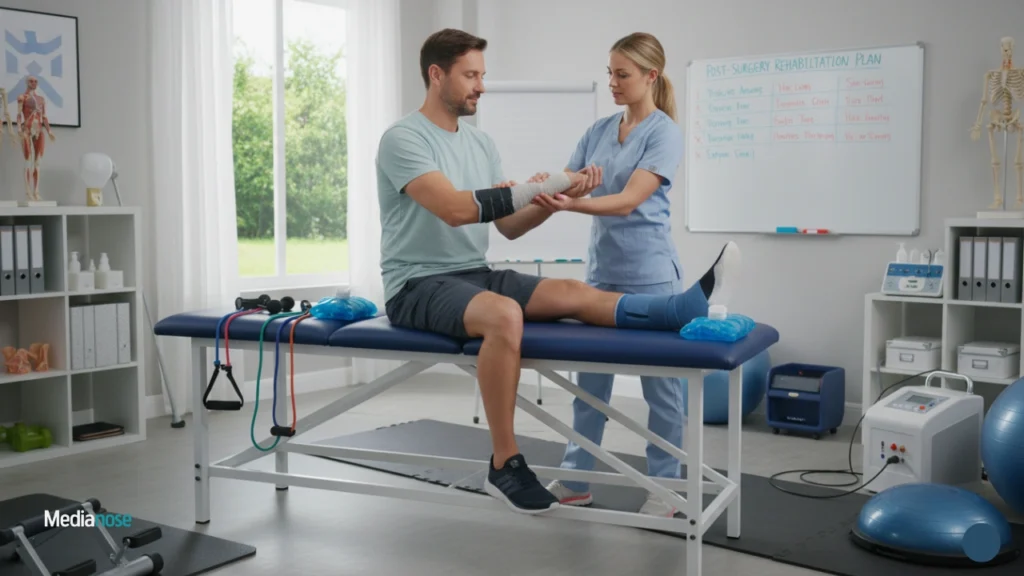Wrist and ankle injuries can significantly impact daily life, ranging from sprains and strains to fractures and dislocations. WellHealthOrganic surgery for wrist and ankle injuries offers advanced surgical techniques combined with holistic recovery methods, aiming to restore function and alleviate pain. This approach emphasizes minimally invasive procedures, personalized rehabilitation, and a focus on overall well-being.
Understanding WellHealthOrganic Surgery for Wrist and Ankle Injuries
WellHealthOrganic surgery for wrist and ankle injuries integrates cutting-edge medical practices with natural healing principles. The primary goal is to address the root cause of the injury, promote rapid recovery, and reduce the risk of future complications.
Key Features of WellHealthOrganic Surgery
- Minimally Invasive Techniques: Utilizing small incisions and advanced imaging, surgeons can repair damaged tissues with precision, leading to reduced pain and quicker recovery times.
- Holistic Rehabilitation: Post-surgery, patients engage in rehabilitation programs that include physical therapy, nutrition guidance, and stress management to support overall healing.
- Personalized Care Plans: Each treatment plan is tailored to the individual’s specific injury, lifestyle, and health status, ensuring optimal outcomes.
Types of Wrist and Ankle Injuries Treated

WellHealthOrganic surgery addresses a variety of injuries, including:
- Fractures: Breaks in bones due to trauma or accidents.
- Ligament Tears: Damage to the connective tissues that stabilize joints.
- Tendon Injuries: Strains or ruptures affecting movement.
- Arthritis: Degenerative joint conditions causing pain and stiffness.
- Dislocations: Joints forced out of their normal position.
Benefits of Choosing WellHealthOrganic Surgery
Opting for WellHealthOrganic surgery offers several advantages:
Also Read
- Faster Healing: Minimally invasive techniques reduce tissue damage, leading to quicker recovery times.
- Reduced Pain: Smaller incisions and advanced pain management strategies minimize discomfort.
- Lower Risk of Complications: Personalized care plans and holistic rehabilitation reduce the likelihood of post-surgery issues.
- Improved Functionality: Comprehensive treatment addresses both the injury and overall well-being, leading to better long-term outcomes.
Recovery and Rehabilitation Process

The recovery journey involves several stages:
Immediate Post-Surgery Care
- Rest: Allow the body to begin the healing process.
- Ice Application: Reduce swelling and pain by applying ice for 15-20 minutes every 2-3 hours.
- Elevation: Keep the injured area elevated to decrease swelling.
Ongoing Rehabilitation
- Physical Therapy: Engage in exercises to restore strength and mobility.
- Nutritional Support: Follow dietary guidelines to promote healing.
- Stress Management: Incorporate relaxation techniques to support overall health.
Long-Term Maintenance
- Regular Check-Ups: Monitor progress and address any concerns.
- Lifestyle Adjustments: Implement changes to prevent future injuries.
Potential Risks and Complications
While WellHealthOrganic surgery is designed to minimize risks, it’s essential to be aware of potential complications:
- Infection: Proper wound care and hygiene are crucial to prevent infections.
- Nerve Damage: Although rare, nerve injury can occur during surgery.
- Blood Clots: Follow post-surgery guidelines to reduce the risk of clots.
- Delayed Healing: Adhere to rehabilitation protocols to ensure timely recovery.
Frequently Asked Questions
1. What is the typical recovery time after WellHealthOrganic surgery?
Recovery time varies depending on the injury’s severity and the individual’s health. Generally, patients can expect a gradual return to normal activities within 6 to 12 weeks.
2. Are there any dietary recommendations during recovery?
Yes, a balanced diet rich in vitamins and minerals, particularly calcium and vitamin D, supports bone healing. Your healthcare provider may offer specific dietary guidelines.
3. Can I resume physical activities immediately after surgery?
No, it’s essential to follow your rehabilitation plan and consult with your healthcare provider before resuming physical activities to prevent re-injury.
4. How can I prevent future wrist and ankle injuries?
Incorporate strength training, flexibility exercises, and proper footwear into your routine. Additionally, practicing safe techniques during physical activities can reduce the risk of injuries.
Conclusion
WellHealthOrganic surgery for wrist and ankle injuries combines advanced medical techniques with holistic recovery methods to provide comprehensive care. By addressing both the physical injury and overall well-being, this approach aims to restore function, alleviate pain, and enhance quality of life. If you’re considering surgery for a wrist or ankle injury, consult with a healthcare professional to determine the best course of action tailored to your needs.





